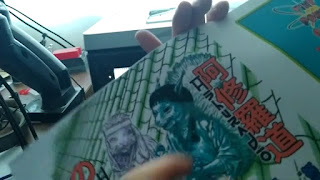I had a really nice cheap led board, just a thin led light table, & I was trying to think of a way to get it at the proper tilt because it was the perfect size; 13x18.
I got lazy & ordered a $60 desktop angle adjustable drawing table. It didn't work for me at all, the lowest setting was flat. The 2nd lowest was 70°, the 3rd was 80, & 4th was 90! & It was 16" tall, so 1" of your comic pages would hang over the edge.
I just need a casual 25° lift on that back end to ease proportion warp & eye strain, not to mention to avoid overkilling your wrist angle with the steeper grades.
I returned the desktop table & kept thinking, what could I use that's cheap, readily available, easy to assemble & use, easy to adjust, self-leveling, & disposable!?
Impossible ideal right? Well you already own it. Too good to be true? The answer was a roll of paper towels.
You probably keep a roll nearby for cleaning your nibs or brushes, all you need now is a thin sturdy surface you can lean on the towel roll on top of any flat table to make the perfect angled drawing surface.
I wanted my surface to meet the edge of the table, so I taped a flat wood stick to the edge. There's nicer ways to accomplish the same purpose, but Im happy with it, it's a great return for practically zero effort.
Theres products on Amazon going for $100s just to give you the "architects angle", lifting the top of your canvas 3" up.
Just use a roll of towels✌️👍


















